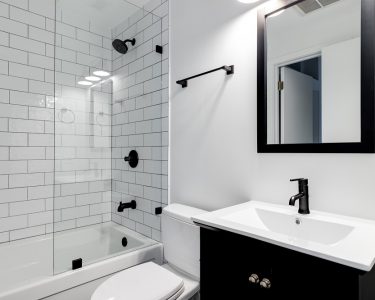Originally posted on: https://bemyval.com/harmonizing-home-and-mind-painting-techniques-for-mental-wellness/
The focus on wellness and mental health has increasingly influenced home decor and interior design, particularly in the realm of residential house painting. This article explores how the strategic use of colors and design elements in our living spaces can significantly impact our mental well-being. We will delve into the psychology of color, suggesting palettes that promote relaxation, focus, or creativity for different rooms, and discuss the benefits of biophilic design in creating calming environments. Additionally, we will provide ideas for crafting DIY Zen spaces using calming colors and textures, turning your home into a sanctuary for mental health and relaxation.
Colors for Mental Wellbeing
The psychology of color plays a significant role in interior design, particularly in creating environments that promote relaxation, focus, or creativity. Paint colors for well-being can vary depending on the room’s purpose and the desired mood. For instance, blues and greens are often associated with calm and relaxation, making them ideal for bedrooms and bathrooms. On the other hand, vibrant colors like yellow or orange can stimulate creativity and are great for spaces like home offices or studios.
Living Room: Calm and Relaxation
For living rooms, selecting colors that foster a sense of calm and relaxation is essential. Soft blues, reminiscent of the sky and sea, instill a sense of serenity and spaciousness, making them ideal for spaces where unwinding is key. They are known to lower heart rate and blood pressure, contributing to a relaxed environment. Warm greys act as a neutral, soothing backdrop that pairs well with various decor styles, offering versatility while maintaining a peaceful ambiance. Gentle greens, inspired by nature, bring a sense of tranquility and renewal, perfect for family gathering spaces where relaxation is a priority.
Bedroom: Restful and Soothing
In bedrooms, the goal is to create a sanctuary for rest. Soft lavender, with its calming and soothing properties, can help in reducing anxiety and promoting a peaceful sleep environment. Pale blues are excellent for inducing a state of serenity, ideal for a restful night’s sleep. These colors mirror the calming aspects of the sky and water, promoting deep relaxation. Muted greens, reminiscent of natural landscapes, are excellent for a bedroom as they help in reducing stress and promoting a sense of well-being, essential for a recuperative sleep space.
Home Office: Focus and Productivity
Home offices require a balance of colors that promote focus and productivity without being overly stimulating. Shades of blue not only stimulate mental activity but also create a sense of calmness, aiding in sustained focus during work tasks. Lighter blues are particularly effective in maintaining a calm yet alert state of mind. Greens, symbolizing nature and growth, can enhance concentration and reduce eye strain, especially important in spaces used for prolonged periods. Soft yellows, associated with creativity and energy, can create an uplifting atmosphere, fostering innovation and positive energy in a workspace.
Biophilic Design through Paint
Biophilic design, which focuses on bringing elements of nature into interior spaces, has profound effects on mental health and well-being. Incorporating natural elements and colors in interior design, especially through paint, can create a calming and restorative environment. Utilizing shades of green and blue, which are predominant in natural landscapes, can invoke a sense of tranquility and relaxation in a space. These colors, reminiscent of foliage and water, can reduce stress and anxiety, making them ideal for creating a serene home environment.
The application of biophilic principles goes beyond just color selection. It’s about creating a cohesive space that mimics the natural world. Textures and patterns that reflect natural scenes can be incorporated into the design to enhance the connection to the outdoors. This can include using paint techniques that mimic natural materials like stone or wood, or choosing eco-friendly paints that contribute to a healthier living environment. The goal is to create a space that not only looks natural but also feels nurturing and restorative, improving overall mental well-being. To take it a step further, consider using eco-friendly paints to honor the serenity your new nature-inspired home brings you.
DIY Zen Spaces
Creating meditative corners or relaxation areas in your home can be a form of self-care and an effective way to enhance mental well-being. These DIY painting projects for mindfulness can involve transforming a corner of a room into a tranquil retreat using calming colors and textures.
Meditation Space: Tranquility at Home
Creating a meditation space involves choosing calming colors like soft whites or gentle pastels to establish a tranquil atmosphere. This color scheme helps to soothe the mind and facilitates focus during meditation or yoga. In addition to color, incorporating natural elements such as plants or a small water feature can enhance the peacefulness of the space, making it a perfect spot for relaxation and introspection.
Adding tactile elements to your meditation space can further enrich the experience. Comfortable cushions, a soft rug, or textured throws can make the area more inviting and comfortable, encouraging longer periods of meditation or relaxation. This combination of calming colors and sensory elements creates an ideal environment for stress relief and mental clarity.
Spa-Like Bathroom: Relaxation Oasis
Turning a bathroom into a spa-like retreat starts with choosing paint colors that evoke serenity, such as aqua, soft greens, or gentle blues. These colors create a soothing backdrop, reminiscent of a tranquil spa. The second step is to add elements that enhance the relaxation experience, like plush towels, aromatic candles, and soft lighting, transforming your bathroom into a calming retreat.
Enhancing the spa-like feel of your bathroom can also include adding natural textures and materials. Using wood accents, stone tiles, or bamboo accessories can bring an element of nature into the space. Together with the calming color palette, these natural touches create a holistic spa experience, perfect for unwinding after a long day.
Eco-Friendly and Budget-Friendly Approaches
Eco-friendly approaches in creating Zen spaces involve using sustainable, low-VOC paints, which contribute to a healthier indoor environment. Additionally, incorporating recycled or upcycled materials in decor can add unique charm while being environmentally conscious. In the second paragraph, managing a budget doesn’t mean sacrificing style or well-being. Affordable DIY painting techniques, like sponge painting or using stencils, can add visual interest without high costs. Creative repurposing of existing items can also be a cost-effective way to enhance your Zen space, reflecting personal style and mindfulness.
Painting Your Way to a Peaceful Mindset
The integration of wellness and mental health considerations into residential painting is not just a trend but a meaningful approach to enhancing quality of life. By carefully choosing paint colors for calm and relaxation, adopting biophilic design principles, and creating DIY Zen spaces, homeowners can create environments that support their mental and emotional well-being. Whether it’s through mood-boosting paint colors or creating a calming home environment with paint, the impact of these choices on mental health is significant and beneficial. As we continue to understand the deep connection between our environment and our mental state, the role of interior design and painting in promoting wellness becomes increasingly important.





